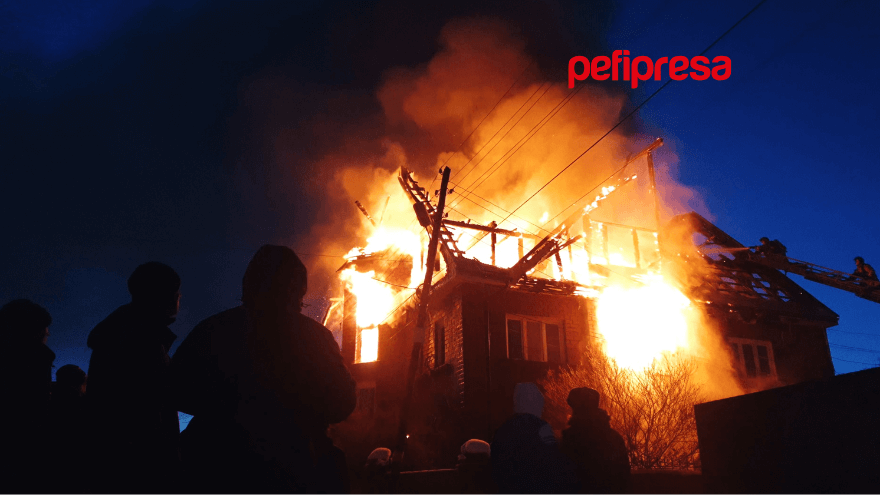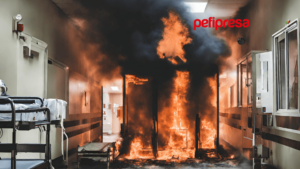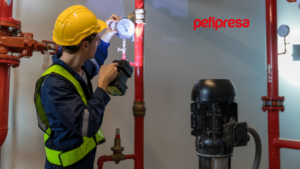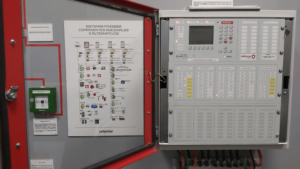Fires, unfortunately, are part of our lives, but although they can be tremendously dangerous and deadly, they don’t always have to be, and if we know what to do in different situations we will have more possibilities that both the dangers and their consequences are reduced.
What is a fire
A fire is an exothermic oxidation reaction that releases heat and light. The reaction can be caused by heat, electricity, friction, or a chemical reaction. A fire can also be started by natural or artificial causes.
A fire requires three elements: oxygen to burn; fuel (or something that can burn); and a trigger, such as heat from something like a spark or flame to start the reaction.
When fire burns, it produces ash, smoke and carbon dioxide. The heat from this reaction heats nearby objects, such as houses or trees, until they begin to spread their own flames.
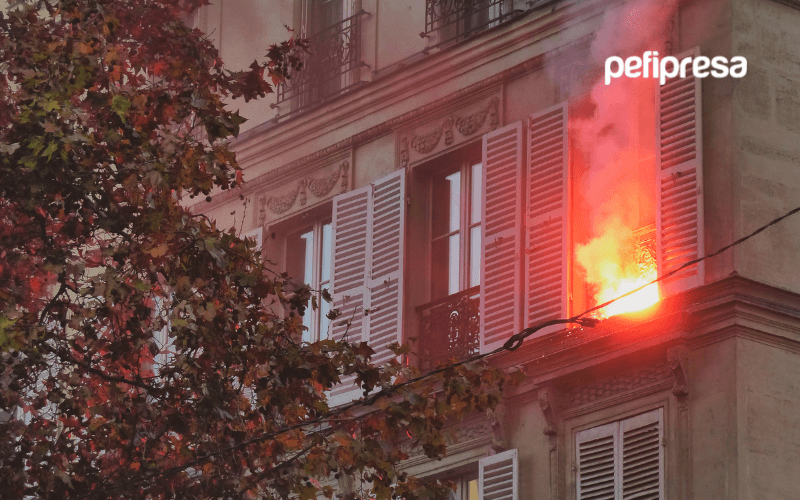
Most common causes of fire generation
The most common causes of fires are:
- Ignition of flammable liquids or gases.
- Ignition of solid flammable materials such as wood, paper or plastic.
- Electrical faults, short circuits or generation of sparks.
- Overheating of electrical appliances.
- Fire created artificially recklessly.
- Misuse of everyday products that generate heat or fire, such as cigarettes or lighters.
Steps to take in the event of a fire
All fires have 3 different phases, from the incipient phase, which is when the fire starts, through the combustion phase , which is when the first flame appears, until the latent phase, when the fire has already acquired almost uncontrollable dimensions.
Depending on the phase in which we find ourselves, we must act in one way or another, also being aware that not all fires take the same time to go through the phases, nor their impact or consequences they are the same.
It is not the same to have a fire in a wood factory, or in a chemical plant, than in the surroundings of a swimming pool, for example.
1. Fire assessment
The first thing is to do an assessment of the fire, if possible, and determine what actions should be taken. Must consider:
Fire phase:
You have to try to find out the level of the fire, if it is in its initial phase, such as seeing a smoking trash can, or smelling burning. In this situation you should act as quickly as possible to try to put out that fire that we could describe as an outbreak.
If the phase is advanced, and the fire has proportions considered greater than those that a normal person can resolve, the action will be different and we will analyze it below.
Combustible material:
If you are able to find out what material is burning you will have advanced a lot in your fight against the fire, if the material is normal solid fuel (wood, plastic, tree branches, paper…)you can choosing to extinguish it using blankets, fire extinguishers, hoses, depends on the suffocation tool you have.
If you are near flammable liquid or gaseous materials such as paint, gasoline or oil, you should call 112, the emergency telephone number in Spain, immediately because these materials can explode if they reach their flash point (the in which they burn), and flee the area.
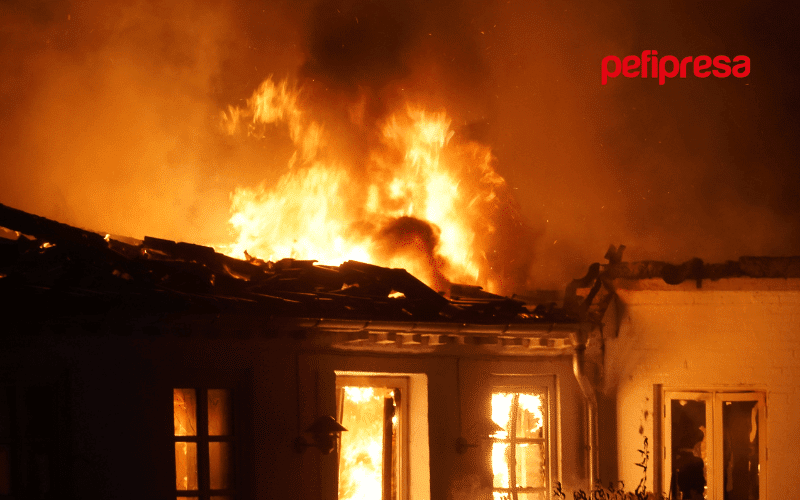
Fire location:
It is an outdoor area, such as a fire in a parking lot, or in a park, or it is contained in a closed area such as a room or an elevator.
Possible consequences:
It is essential in the evaluation to find out if there are people trapped that could be reached by the fire, animals or nearby combustible materials that are not yet involved.
In some cases, it may be necessary to evacuate an area due to the foreseeable future development of toxic fumes or other hazards that exist beyond your control (for example, a nearby chemical plant may be leaking hazardous chemicals into the atmosphere).
Cause of ignition:
The cause of the ignition (if known). This information can help direct your efforts toward preventing further spread or extinguishing the remaining flames, or to further inform firefighters.
2. Performance according to the evaluation
Once the parameters of the evaluation have been analyzed, a decision must be made quickly, which can be in these 2 ways, if action is taken to proceed with the suffocation of the fire or if the Emergencies are notified and the place is fled.
For the first option we have to be very clear that the fire is incipient and can be controlled with the means available, it is not the same to face alone and without any means to meet several people who can help and have extinguishing media such as fire extinguishers, hoses (BIES), etc.
If human lives are in danger, it is also a transcendental factor in making the decision to actively participate or flee.
It is always important to indicate that the risk assumed by the person who intends to suffocate cannot be greater than letting the fire evolve and notifying truly competent personnel in this matter, such as firefighters.
3. Fire suffocation
If in the evaluation of the fire we understand that we have to act directly, we are going to see some common situations and how to attack them, being aware that there are thousands of different forms of fire and we always have to adapt our actions to the exact type of fire that we are facing. let’s find.
We will only give guidelines if the fuel is solid and known, such as paper or wood, and is in its most incipient phase.
The most common materials that we can easily dispose of are water or earth, sand or some other non-combustible material.
Of course, if you have a fire extinguisher or a dry chemical agent, such as foam or powder, we will use it by projecting the product on the fire until it is suffocated.
As we have said, if in the evaluation of the fire we have considered that the fire exceeds us, our action must be the following.
What to do if there is a fire and we consider that we cannot put it out
1. Always stay calm and don't panic
Although it may seem obvious, it is so important that it is always worth remembering. If a fire emergency occurs, be sure to remain calm and collected. Panic could further complicate the situation and cause injury or death.
2. Flee the area in a controlled manner
As effectively as possible, flee the area of the fire and get to safety in an area that you think will not be affected by fire imminently.
If there is someone who can be helped without putting the person who is helping at risk, help them to save them too.
If you are in a closed building or area and cannot get out safely, stay where you are until help arrives or find the area as far away from the flames and smoke as possible.
If you have to live with the fire until you receive help, stay away from the doors, try to place soaked towels or clothes at the bottom of the doors if you can so that the smoke does not pass through.
It is also important that you open the windows if you are outside and crouch down if there is smoke, since smoke, apart from being very hot and able to burn, has a high concentration of CO that will make us dizzy and even loss of consciousness, something incompatible with surviving the fire.
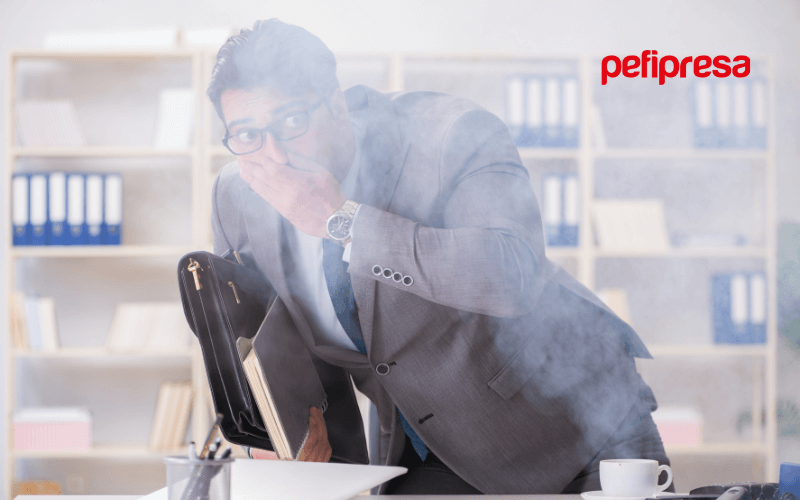
3. Notify the emergency services
If you have not had the option to flee, or as soon as you have taken shelter in a safe area, and with the help made possible by smartphones that practically everyone already has, call 112 and report it, as exhaustively as possible, if it can be by following all the steps analyzed in the evaluation of the fire, so that the emergency services have all the information possible and act in the most efficient way possible.
Always call preferably from your mobile phone from an area away from flames or smoke.
Do not use a landline phone if possible, as it could be cut off due to power outage or overload of calls by others who have also been affected by the fire emergency.
What never to do in case of fire
1. Never use elevators
Never use an elevator during a fire emergency, they can be deadly traps for different reasons. In general, never use elevators in emergency situations such as fires, earthquakes, bomb threats…
They can work for a moment and stop due to electrical or mechanical problems, being trapped at the mercy of the fire.
If there is smoke, it can interfere with the safety photocell and cause the lift to never close the door and not move.
Always opt for stairs, be sure that these are the safest routes to take instead of elevators when evacuating a building or structure.
Stairs also provide access for firefighters in an emergency and allow them to quickly reach upper floors.
During an emergency, proceed immediately to the nearest stairwell and exit the building or structure as quickly as possible by descending the stairs, if possible single file with your hands above your head, keeping Also, if possible, wear warm or long-sleeved clothing at all times.
2. Be careful with water, never pour it on electrical equipment
Never use water against electrical equipment that may be exposed to fire. Instead, cover electrical appliances that may have caught fire or overheated (for example, hair dryers, electric heaters).
Water does not prevent electrical shock or electrical fire. Do not use the water if you believe there is a risk of electrocution.
If possible, make sure all appliances, televisions, computers, laptops, phones, and other electrical or electronic devices are turned off before leaving them alone in case they catch fire while unattended.
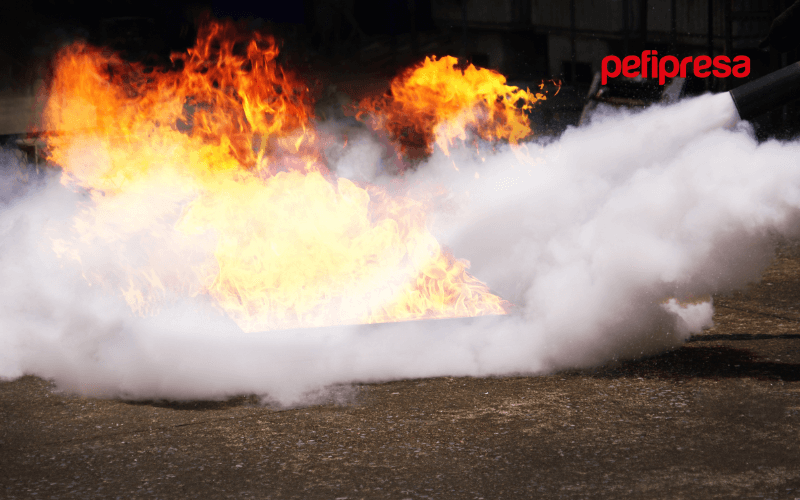
Methods for putting out a fire
This point is purely informative, since, except on some occasions, if a fire has spread sufficiently, the methods to put out a fire will be used by firefighters or qualified personnel.
The primary goal of firefighting is to prevent the destruction of property and assets. The three basic methods of fire suppression are:
Suffocation
This method is based on depriving the fire of oxygen by sealing all possible sources of air. The most common methods are fire fighting foam and water.
If a fire needs to be put out, it is best to use water or foam because they do not leave any residue that could cause damage to property or equipment.
Extinction
This method aims to remove the heat source of a fire to stop its spread and cause it to cool down so that it can be extinguished without further treatment.
This can be achieved using chemicals such as carbon dioxide or inert gases (argon, nitrogen, etc.), which are used in modern fire extinguishers.
Fire suppression
This is the method of acting against the flames themselves. It is the very act of extinguishing a fire. Fire suppression systems are used on aircraft, ships, and in industry to minimize damage from fires. Types of fire suppression include sprinklers and chemical extinguishers.
Fire suppressant gases are often stored in cylinders that are installed inside a confined space, such as the cargo hold of an aircraft or a room in an industrial facility. Gas cylinders may be directly connected to an unloading system or located remotely and connected through hoses or pipes to the unloading system.
In the case of inert gas systems, the stored gas will displace oxygen from the enclosed space and provide an oxygen-free environment for firefighters to enter to fight a fire within that space.
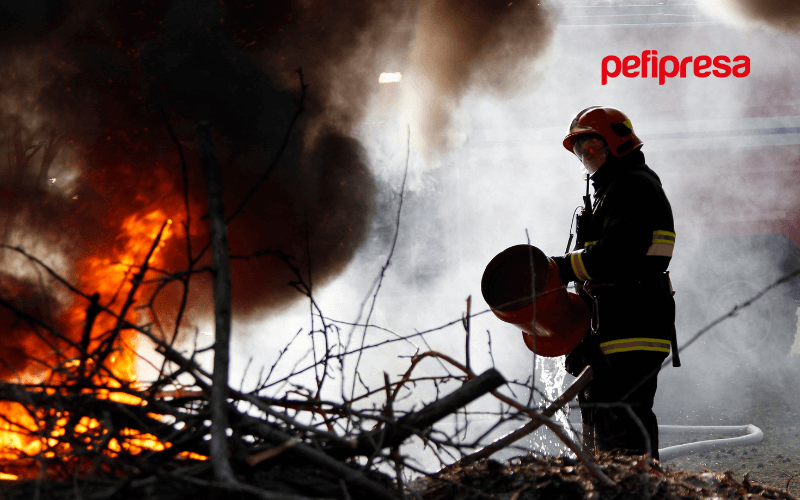
What to do after a fire
Once we have left the radius of action of the fire and we no longer have control of the situation, which passes to the emergency service, we can carry out the following operations:
- Call the insurance company.
- Call the building owner or manager, if applicable.
- Call your family and friends to let them know you’re okay and what happened. They have been able to find out somehow and if you don’t have your mobile phone they will be very worried. Or if they are unaware of the situation, they can be helpful in assisting with anything else that may come up regarding property damage or medical care during this time period.
Contact your doctor immediately if you have been injured during or after an incident like this: he will give you any medical information that may be necessary.

